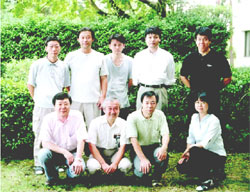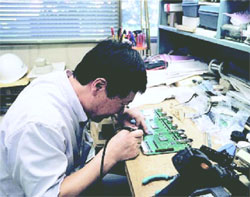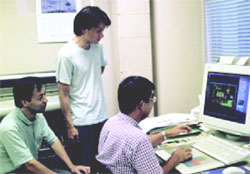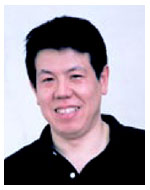|
|
|
The Electronics Facility
 |
The Electronics Group has been involved in many experiments in and outside of KEK including big international collaborations. We have been kept busy since commercially available electronics are often inadequate for experiments and most group can not afford to develop electronics by themselves. In addition to the circuit development work, we operate electronic component stockroom and electronics equipment pool.
Since the start of KEK some 35 years ago, we have been developing various circuits and electronic modules (mostly in NIM and CAMAC formats). Most of them are still in use. During the TRISTAN period, higher reliability, lower cost, higher packing density were the mandatory requirements. A group called Data Acquisition Development (DAD) Group was formed to design and produce electronics for the TRISTAN experiments. DAD members were people from TRISTAN experiments and computer specialists in addition to the KEK Electronics group. The group designed a system called the TKO system. It covered good portion of TRAISTAN electronics and then was adopted for Proton Synchrotron experiments afterwards. In general, we do the R&D part and outside vendors do the mass production according to our design. In post-TRISTAN era, we started to adopt the technologies of advanced telecommunication and high-tech consumer/ industrial electronics such as VME for example. Although there are off-the-shelf electronics that can be used in experiments, they do not fulfill all the requirements for experiments so that we will stay busy in a future. We have been participating in many experiments at KEK-PS and TRISTAN, we currently involved in a neutrino oscillation experiment (K2K), a B-meson experiment (BELLE), and a rare K-meson decay experiment, as well as a J-PARC project and an ATLAS experiment.
 |
KEK electronic parts stockroom and KEK Electronic Equipment Pool (KEEP) have been under our responsibility for 30 years. The electronic parts stockroom has been appreciated for the standardized and quality-assured parts for higher reliability and much lower price tag with no waiting for delivery, all of which have proven to be vitally important for experiments. Over 1000 kinds of parts are available through a computer inventory system. In addition, we hold the Circuit Committee meetings several times a year to respond to user needs and for improvements.
KEK is an inter-university research institute. The KEEP offers over 10000 units including modules, crates, power supplies and so forth so that researchers from universities often do their experiment without bringing in any electronics from outside unless they need very special ones. Taking out p r o c e d u r e i s m a d e v e r y simple along with a barcode ID attached on each unit.
These labor saving effort has paid off and despite of the large number of units we have to deal with every day, it is not taking up much man-power from us so that w e c a n c o n c e n t r a t e o u r effort for circuit research and development works.
Circuit Development Up to now, systems based on NIM, CAMAC, TKO and VME modules have been developed.
 |
We have been very conscious about reducing the development cost and time, making use of readily-available technologies in anything from sensors to computers. We regularly survey outside technologies. These effort enables us to spare time to improve members capabilities and experiences. With regard to the data processing system, development of the "COPPER" system is almost completed with the assistance of domestic and foreign collaborators. Based on this system, a sensor reading system that uses a network, PCI bus, LINUX, VME, and Euroracks from consumer technology is under consideration. This will facilitate towards lower purchase and maintenance costs. For front-end electronics and their implementation technology as well as for rear-end electronics, very high integration is essential. We have developed a technology in bipolar and CMOS integrated circuit technology. Regarding the development of some ASICs, collaboration with other universities and research organizations is underway. Regarding implementation technology and its developmental progress, we are concentrating on the possibility of using a multiplayer, flexible PCB with a low mass metal in sensor production.
Direct contact with researchers makes us fully aware of what kind of circuits are needed in a future. It is the closeness to researchers that counts. In the mean time, we will be updating our technology for the future.

The Author of this article, Dr. Manobu Tanaka has been the head of the Electronics Facility since 2000.
|
|
